Immerse yourself in Haro's vibrant flavors and uncover hidden culinary gems with our expert insider guides. Plan an unforgettable trip today!
Read more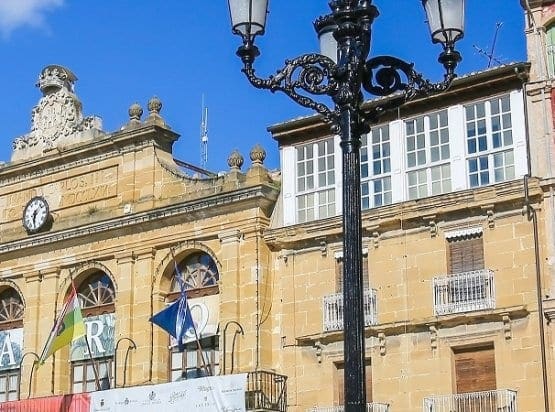
EXPLORE ALL OUR LA RIOJA WINE REGIONS GUIDE
Last updated: October 18, 2024
Spain’s most famous wine producer has been forced to adapt to many pressures in recent years, not least the demands for greater terroir segmentation and a renewed focus on site-specific wines. Rioja Oriental, formerly known as Rioja Baja, has been at the center of this ongoing debate. The region is a microcosm of the struggle to define Rioja’s contemporary soul after a century and a half of tradition.
For decades, the largest sub-region in Rioja was derided as the area’s poor relation; the local industry was primarily dominated by co-operatives who supplied bulk wine to the major blenders in Rioja Alta. The name ‘Rioja Baja’ refers to the generally lower altitudes of the vineyards when compared to their neighbors: in hot vintages, some local wines are undeniably alcoholic and occasionally quite rustic. But pioneers like Alvaro Palacios have demonstrated that the Rioja Oriental can produce some of Spain’s finest Grenache: rich, spicy, aromatic, and immensely concentrated. Poor relation? ¡Qué va!, as they say in the bars of Logroño.
Discover more about Spanish Wine
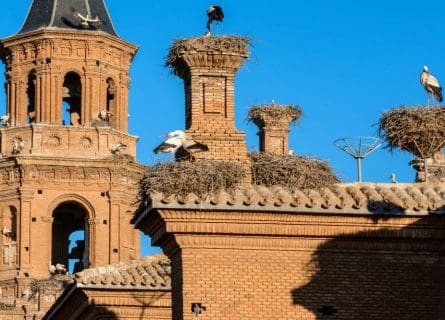
Rioja’s eastern expanse has been planted with vines since the days of the Romans; bathed in sunlight, it was the ideal place for the Italian conquerors to grow late-ripening varieties such as Grenache and Mazuelo (Carignan). Today, you can find historical remnants of this ancient civilization across Rioja Oriental, particularly in Alfaro and Calahorra. The former is an attractive, small Roman town on the River Ebro – the furthest point reached by the shallow boats of the Phoenicians. In addition, Alfaro served as an important protected frontier between the rival kingdoms of Castile and Navarra before the Spanish unification brokered by Fernando and Isabel took place. The Romans originally founded Calahorra as the town of Calagurris, where the poet Aurelio Prudencio Clemente was born in 348 AD.
However, the Western Roman Empire collapsed into anarchy by the 5th century. Many years later, in 1045, Christian forces reconquered Calahorra from the Moors, and its massive town walls signify its strategic importance through the ages. By the 13th century, viticulture was once again thriving in Rioja, reaching its peak in the 1800s.
The Birth of Modern Rioja Wine
Yet the style of Rioja we associate with the traditionalists – Lopez de Heredia is a classic example – did not come into existence until the 19th century. Before that point, Rioja was very light and juicy stuff made by small-scale farmers lacking stainless steel tanks and oak barrels. However, after the phylloxera louse devastated French vineyards in the late 1800s, Bordeaux merchants came to Rioja to replenish their wine stocks. The high-quality, if light, wines of Marques de Riscal and Murrieta, founded in 1860 and 1872, proved the region’s potential. After negotiating the sale of a considerable volume of wine, the merchants showed how to age it in small barrels. Thus, many of Rioja’s iconic bodegas were founded in the 1890s, clustered around Haro’s railway station.
With its rail links to the Atlantic coast, Haro was the ideal center for blending wine brought in by cart from as far away as Rioja Baja (as was). For that reason, most of Rioja’s leading wineries are based in Rioja Alta rather than its far bigger cousin.
A movement to change the zone’s name reached a fever pitch in the mid-00s. Proponents of the campaign (such as Alvaro Palacios and Telmo Rodriguez) argued that “Rioja Baja” carried a negative connotation and would put off consumers in the market for fine wine. Finally, in April 2018, the Rioja Consejo Regulador granted their wish, and Rioja Oriental was born. Since then, several exciting small-batch wines have emerged from eastern Rioja, including several exceptional Grenache reds.
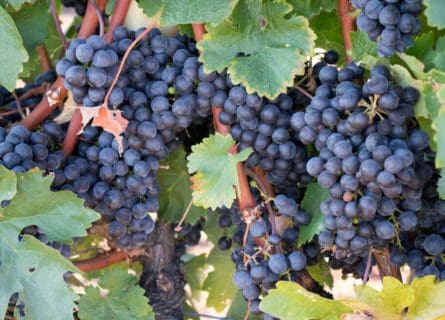
Today, smaller, family-owned wineries and cooperatives cultivate over 24,000 hectares in Rioja Oriental. It produces approximately 40 percent of Rioja’s total wine output, yet traditionally, Rioja Baja, as it was formerly known, has not been associated with high quality. It lies east of Logroño along the River Ebro to Alfaro in the southeast, with a large part in the Rioja area south of the river. There is also a small strip within the Navarra region to the north. The terrain is mainly flat and expansive, in contrast to Rioja Alavesa. The climate, meanwhile, is semi-arid Mediterranean, with scorching hot summers being far from uncommon. However, global warming, drought, and hydric vine stress have been significant issues recently.
Potential of Terroir
Therefore, not everyone is convinced that Oriental is a premier terroir in northeastern Spain; unfavorable comparisons with Rioja Alta and Alavesa are inevitably drawn. Indeed, Rioja Oriental’s terroir and whether growers were maximizing its potential have long been a subject of intense debate in Rioja. Its key acolytes – Telmo Rodriguez and Alvaro Palacios again – have long argued that Rioja Oriental could produce wines as venerable as Rioja Alta if a suitable grape variety matches the right site. The soils are mostly alluvial silt and ferruginous clay – the former is free-draining yet very warm.
As a result, winemakers traditionally planted Garnacha on these soils, producing wines that are high in alcohol, powerful, and full-bodied but quick to oxidize and not as fine as those from neighboring Rioja Alta. Bodegas in other regions traditionally purchased Garnacha from growers as it could add fire and spice to the blends if used judiciously. But now, winemakers in the zone are producing plenty of mono-varietal and single-estate wines that rival the dramatic heft of Rioja Alta’s finest bottles.
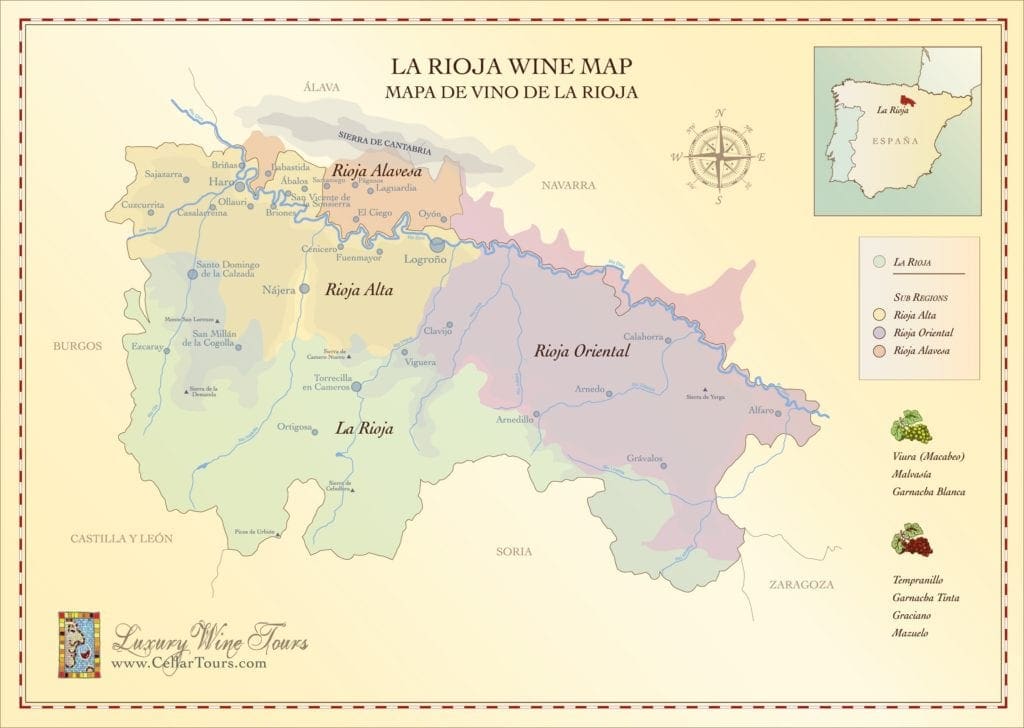
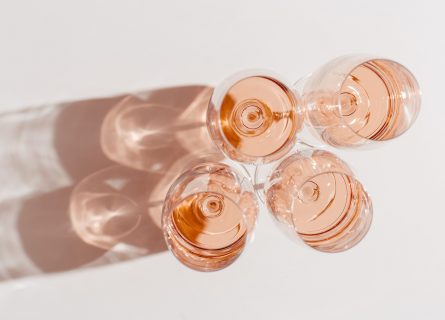
Rioja Oriental has seen numerous changes over the past 45 years. In the 1980s, many growers decided to rip out their old Garnacha vines in favor of Tempranillo, which was easier to sell. Bodegas Berberana (now part of Arco Bodegas Unidas group) led the way, planting Tempranillo and Viura in the calcareous soils found in the higher part of the area at Monte Yerga. They proved that Rioja Oriental could produce Tempranillo wines of high quality and finesse with careful site selection. The best of this new firmament, often aged in French oak for a comparatively short period, are fruit-driven wines packed full of extract. They reach an apogee when served with Chuleton (bone-in rib-eye steak).
Palacios’ Grenache Renaissance
More recently, Palacios and his contemporaries have spearheaded a renaissance of Grenache in Rioja Oriental, particularly the old bush vines, which, if properly handled, can produce wines of incredible concentration and potency. When Alvaro Palacios released Remondo La Montesa, he set a new standard in Rioja Oriental winemaking. No longer can anyone dismiss the region as Rioja’s poor relation—the quality of wine produced in this up-and-coming zone is unprecedented. Things will never be the same again: Rioja Oriental is ready to amaze and astound Rioja connoisseurs.
We should also give a shout-out to Rioja’s sorely underrated rosé wines. Most, if not all, of the region’s finest rosé comes from Rioja Oriental, where winemakers hand-craft it using Garnacha grapes that undergo the lightest maceration before fermentation. Salmon-colored and infused with intense red fruits, Riojan pink is a summer cliché brought to life. Try it.
A Guide to the Wine Types and Classifications in La Rioja: Read more

In July 2020, Ramón Bilbao launched a trio of single-vineyard wines marketed under a new brand name: Lalomba. The collection garnered high scores from critics and journalists, particularly the Finca Lalinde Rosé. A blend of 90% Garnacha and 10% Viura from Rioja Oriental, the fruit is sourced from old bush vines planted in 1976. Fermented and partially aged in concrete to preserve the wine’s raciness and purity, it is unbelievably refreshing and floral. Voted the Best Rioja Rosé in Tim Atkin MW’s Rioja Report for three years running, Finca Lalinde is often voted Best Spanish Rosé in Spanish wine guides. Proof indeed that Rioja Oriental has thrown off the shackles of mediocrity and embraced the quality revolution head-on.
Quiñon de Valmira is Crafting Luxury
Six years earlier, Alvaro Palacios bequeathed Rioja Oriental, its first icon wine. Selling for over $400, Quiñon de Valmira caused a massive stir in the sommelier and collector community; was it arrogance to charge so much for an unknown commodity? Yet critics agreed that this was serious stuff: a powerfully structured and refined expression of Garnacha based on vines grown in select plots in Oriental.
Spanish critic Luis Gutiérrez described the 2016 vintage as “a wine of great harmony and elegance.” But, he added: “Even if it feels light on the palate, it seems to have more clout, concentration, power, and acidity than the 2015 like it wants to go one step further.” Nevertheless, the success of Valmira has encouraged other producers to invest in the zone, using whole-bunch fermentation and maturation in amphorae to add class and structure to their Grenache wines. Like a phoenix rising from the ashes, Rioja Oriental demands to be taken seriously in 2023.
Chardonnay is a green-skinned grape varietal native to the Burgundy wine region in France and one of the most popular varieties worldwide.
Find out moreDiscover the Allure of Grenache Blanc: Full-Bodied White Wine from Northeastern Spain. Experience the Richness of High Alcohol, Low Acidity Wines.
Find out moreExplore the allure of Malvasía de Rioja grape. Uncover its origins, tasting notes, and its contribution to the exquisite wines of Rioja.
Find out moreThe sauvignon blanc grape varietal, originally from the Bordeaux region of France, is now one of the world's most loved white varieties.
Find out moreDiscover Viura: Rioja's Prominent White Grape & Catalonia's Macabeo. Explore its versatility in exquisite wines. A must-read for wine enthusiasts.
Find out moreDiscover the irresistible allure of Cabernet Sauvignon—a worldwide favorite with robust, dark-bodied flavor. Unleash your wine journey today!
Find out moreGarnacha: Spain's Red Gem. Akin to Pinot Noir, it bridges terroir and winemaking, crafting captivating expressions.
Find out moreIs a red grape variety that is primarily grown in Spain's Rioja region. Known for its thick skins, small berries, and low yields, this grape produces wines that are deeply colored, highly tannic, and full-bodied, with a range of aromas from dark fruit to spices and leather
Carignan is a red grape variety that grows mostly in Southern France, and is often used as a blending grape
Find out moreDiscover Tempranillo: Spain's iconic red grape. From Ribera del Duero to Toro, it yields concentrated wines. Explore its synonyms and unleash its prowess.
Find out moreGastronomes on tour in Rioja Oriental inevitably find themselves in Rioja’s administrative capital Logroño. And who can blame them: wandering around this great destination provides numerous opportunities to stop for tapas and a glass – or five – of Rioja in this vibrant wine city. Moreover, there is a wealth of restaurants serving classical Riojan dishes, all with impressive wine lists and cellars built before the dawn of electricity.
Indeed, it is worth heading to the old town to sample the incredible atmosphere. Excellent restaurants abound in Calle Laurel – the only problem is choosing. Once inside, expect a smorgasbord of fresh fish (Atlantic and river), game, lamb, premium beef, and locally grown produce. Michelin stars have little clout in this part of the world; authentic home cooking is what most locals crave. And so will you.

Immerse yourself in Haro's vibrant flavors and uncover hidden culinary gems with our expert insider guides. Plan an unforgettable trip today!
Read more
Immerse yourself in Logroño's vibrant flavors and uncover hidden culinary gems with our expert insider guides. Plan an unforgettable trip today!
Read moreIf you would like us to customize an exclusive luxury tour, contact us and let us know your travel plans. We offer luxury food and wine tours for private groups of a mininium two guests. In addition, all of our private, chauffeured tours are available year-round upon request.

